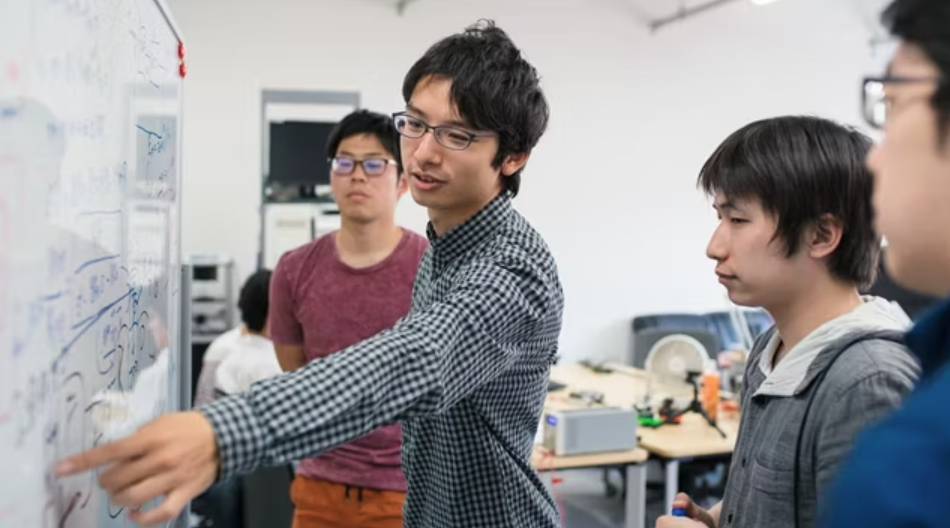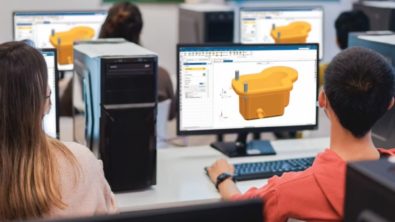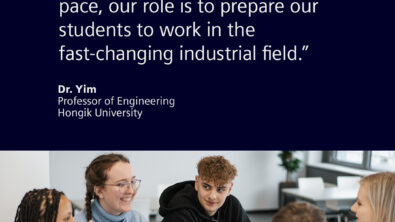Adapting engineering education to the way students learn today

Higher education is at a turning point. Students are increasingly questioning the value of a traditional degree, with a 2022 Statista survey finding that only 53% of adults believed an in-state public university degree was worth the price.
At the same time, the way students consume information has evolved dramatically. They are accustomed to learning in smaller, digestible formats, expect regular progress recognition and seek clear career pathways that align with their goals.
For engineering education, this shift presents a challenge — but also an opportunity. If educators can reimagine how they structure their programs to better align with modern learning preferences, they can help students develop critical skills while ensuring that degrees remain relevant and valuable. One of the most promising ways to do this is through microcredentials.
Why modularization via microcredentials matters in engineering education
Dr. Gary Bertoline, a distinguished Professor of Engineering Technology & Computer and Information Technology at Purdue University, explores the concept of modularizing engineering education in The Engineering Mindset Report. Co-authored with over 30 engineering faculty members and informed by input from over 100 faculty and industry representatives, this report explores how microcredentials can certify skills in real time, offering a more flexible and tangible approach to education.
Unlike traditional degree programs, where students work for years before receiving formal recognition of their knowledge, microcredentials offer a way to certify skills in real time. By completing focused learning modules, students can earn credentials that demonstrate their competencies in specific technical or professional areas. This incremental approach makes education feel more tangible and rewarding while giving students valuable proof of their expertise—even before they graduate.

To address this need, Siemens now offers a number of courses on Coursera with associated badges on Credly, including a series of courses on Applied Sustainability for Technical Managers and in-demand engineering skills like Model-Based Systems Engineering. If you’re a engineering student or professional looking to expand your skill set, these courses are a great place to start.
Dr. Bertoline emphasizes how microcredentials align with the learning habits and expectations of today’s students. “Microcredentials are very appealing to this generation. Normally, students must wait 16 or 15 weeks to get their grade in a course with all kinds of hurdles along the way. But imagine if you told that same student they’re getting a microcredential next week—that’s a much more exciting proposition.”
Beyond motivation, microcredentials offer flexibility. They allow students to tailor their learning experiences to match their career aspirations. Whether someone wants to specialize in AI, data analytics or renewable energy, microcredentials provide an avenue to build targeted expertise without overhauling an entire curriculum.
Expanding skillsets and career readiness
Another advantage of microcredentials is their ability to bridge the gap between education and industry needs. Employers are looking for graduates who not only have strong technical knowledge but also possess problem-solving, communication and leadership skills. Integrating microcredentials into engineering programs makes it easier for students to gain and showcase these competencies.
As Dr. Bertoline points out, microcredentials could help students develop essential skills beyond just engineering principles. “What if every one of your graduates got a microcredential in data literacy? Imagine if students earned microcredentials in technological literacy, which would include things like coding. They could earn microcredentials in problem-solving, in AI and the Internet of Things, in cloud computing and even human literacy, which is communications and teamwork.”
This approach ensures that graduates are not just technically competent but also equipped with the broader skillsets necessary for success in today’s rapidly changing job market.
Bringing microcredentials into the classroom
For educators, the good news is that integrating microcredentials doesn’t require an overhaul of existing courses. In many cases, microcredentials can be created from content that already exists within the curriculum. By offering formal recognition for specific skills and learning outcomes, educators can add immediate value to their programs without making major structural changes.
As engineering education continues to evolve, microcredentials offer a way to meet students where they are — providing a learning experience that is flexible, personalized and aligned with real-world needs. By embracing this approach, educators can help shape a new generation of engineers who are not only technically skilled but also ready to adapt, innovate and lead.
Want to learn more? Download the full ebook to explore how microcredentials can transform engineering education.


